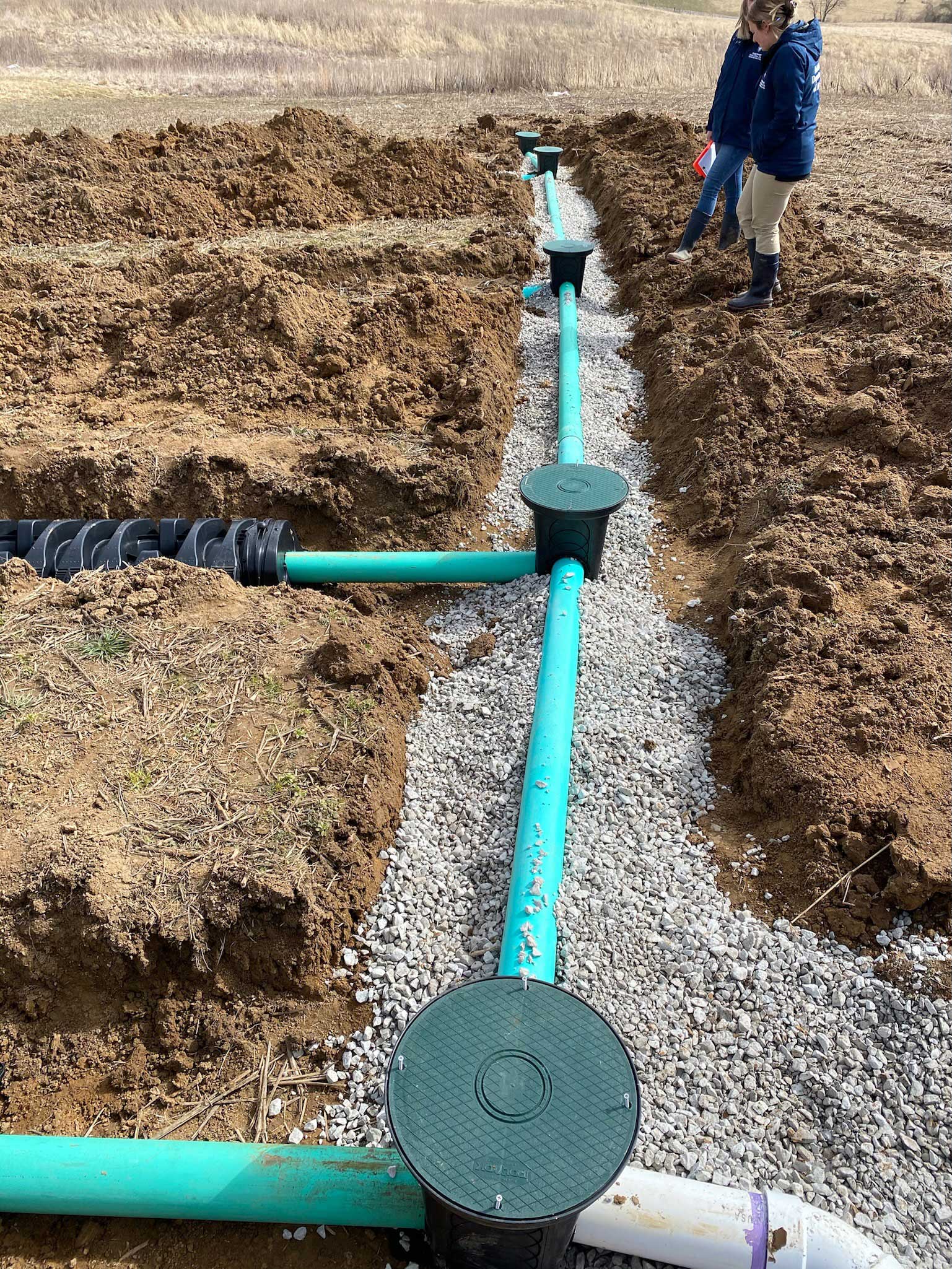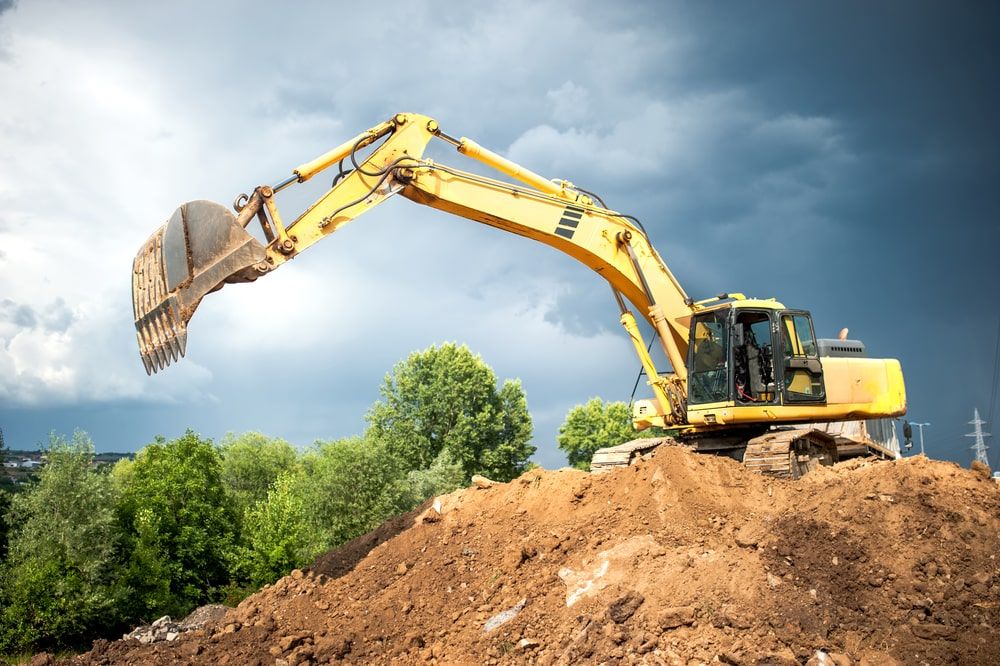Budget Friendly Lancaster Excavation - High Quality Excavation at Competitive Rates
Budget Friendly Lancaster Excavation - High Quality Excavation at Competitive Rates
Blog Article
Introducing the Art of Excavation: Pro Tips for Safe and Productive Excavating
In the world of excavation, the mastery of efficient and risk-free excavating is an art kind that requires adherence, precision, and expertise to well-known methods. As dirt is transformed and earth is relocated, the ins and outs of excavation expose themselves, requiring an eager understanding of equipment, soil structure, safety methods, and environmental factors to consider. The know-how required to browse these elements efficiently can suggest the distinction in between an effective excavation job and a possible calamity. By unraveling the layers of this detailed process, a globe of insights and methods waits for those seeking to boost their excavation skills to new heights.
Importance of Appropriate Tools
To ensure the security and effectiveness of any type of excavation job, utilizing the proper equipment is vital. Excavation projects differ in scope and intricacy, ranging from tiny household landscaping jobs to large-scale building endeavors.
Excavators are fundamental items of equipment in any type of digging procedure. These versatile makers can be found in different dimensions to fit different job demands. Tiny excavators are excellent for smaller jobs, while larger excavators tackle extra comprehensive jobs efficiently. Backhoes are one more important tools type, incorporating the features of a loader and an excavator in one maker. They are important for jobs requiring flexibility and maneuverability.
Excavators excel in tasks that call for pushing huge quantities of soil or particles. By spending in the ideal devices, excavation tasks can be finished securely, on time, and with precision.
Comprehending Dirt Structure
A thorough grasp of soil composition is fundamental for carrying out excavation projects with precision and safety and security. Recognizing the different kinds of dirt is critical as it directly affects excavation methods, equipment selection, and total task efficiency. Soil make-up normally includes 4 major components: sand, silt, clay, and natural issue. Each component has unique homes that affect exactly how dirt responds to excavation procedures.
Sand fragments are the largest and give great drain but supply little communication. Silt particles are smaller sized than sand but bigger than clay, supplying modest water drainage and communication. Clay particles are the smallest and provide high cohesion but poor water drainage. Raw material, such as decomposing plant product, influences soil fertility and stability.
Prior to commencing excavation, performing dirt tests to determine its structure and qualities is necessary. This information assists in choosing the ideal tools, executing security procedures, and establishing excavation approaches tailored to the details dirt problems - lancaster excavation. By comprehending soil composition, excavation experts can boost job results while making sure safety and security and adherence to ideal practices
Precaution and Procedures
Comprehending dirt structure is the keystone whereupon precaution and procedures for excavation tasks are constructed, guaranteeing the wellness of employees and the success of the undertaking. When it pertains to security during excavation, there are numerous crucial procedures that need to be executed to alleviate threats and stop mishaps.
First and primary, before any type of digging begins, a detailed assessment of the website must be performed to recognize any possible dangers such as below ground utilities, unsteady soil problems, or nearby structures that could position a danger. It is crucial to have a qualified person manage the excavation process to make sure that all security procedures are complied with strictly.
Furthermore, all workers included in the excavation has to be effectively educated in safe digging techniques and the proper operation of devices. By sticking to these safety procedures and methods, excavation tasks can be completed successfully and without event.
Efficient Excavation Preparation
When starting an excavation project, careful preparation is important to make certain performance, safety and security, and successful end results. Effective excavation preparation involves numerous key actions that are critical for the smooth implementation of the job. The primary step is to conduct a detailed site evaluation to recognize any type of prospective dangers, such as read more below ground utilities or unpredictable soil problems. This details is vital for creating an in-depth excavation strategy that consists of precaution and take the chance of reduction methods.
As soon as the website analysis is total, the following step is to produce a clear timeline and routine for the excavation activities. This consists of identifying the series of tasks, devices requirements, and workforce allocation. Proper scheduling helps avoid hold-ups and makes certain that the task remains on track.

Furthermore, interaction among all group members is extremely important throughout the planning phase. Clear instructions, routine updates, and reliable coordination are crucial for an effective excavation job. By spending time and initiative in thorough preparation, excavation groups can dramatically improve efficiency, reduce dangers, and achieve successful results.

Taking Care Of Ecological Factors To Consider
With increasing emphasis on environmental sustainability in building techniques, managing ecological factors to consider has actually ended up being a crucial aspect of excavation projects. Excavation activities have the prospective to affect the surrounding setting via soil disintegration, sediment runoff, habitat interruption, and contamination of water resources. To mitigate these threats, it is necessary to execute best techniques that focus on environmental management.

Furthermore, appropriate waste monitoring is essential to avoid dirt and water contamination. Executing treatments for the disposal of hazardous products, recycling of waste materials, and reducing the usage of damaging chemicals can significantly lower the ecological effect of excavation tasks. By incorporating these methods right into excavation planning and execution, building and construction business can make sure that their jobs are not special info just risk-free and effective yet likewise ecologically liable.
Verdict
Finally, understanding the art of excavation needs an extensive understanding of correct equipment, soil make-up, safety and security actions, and reliable planning. By following these guidelines and taking into consideration ecological aspects, excavations can be conducted securely and effectively. It is critical to focus on security and performance in every excavating task to ensure effective outcomes.
As dirt is turned and planet is moved, the ins and outs of excavation expose about his themselves, requiring an eager understanding of tools, soil structure, safety and security procedures, and ecological considerations.To make certain the safety and performance of any kind of excavation project, making use of the appropriate tools is critical.An extensive grasp of soil composition is fundamental for carrying out excavation tasks with accuracy and safety and security. Comprehending the different kinds of soil is vital as it directly affects excavation techniques, tools selection, and general task performance. By comprehending soil make-up, excavation experts can improve job results while making sure safety and adherence to finest techniques.
Report this page